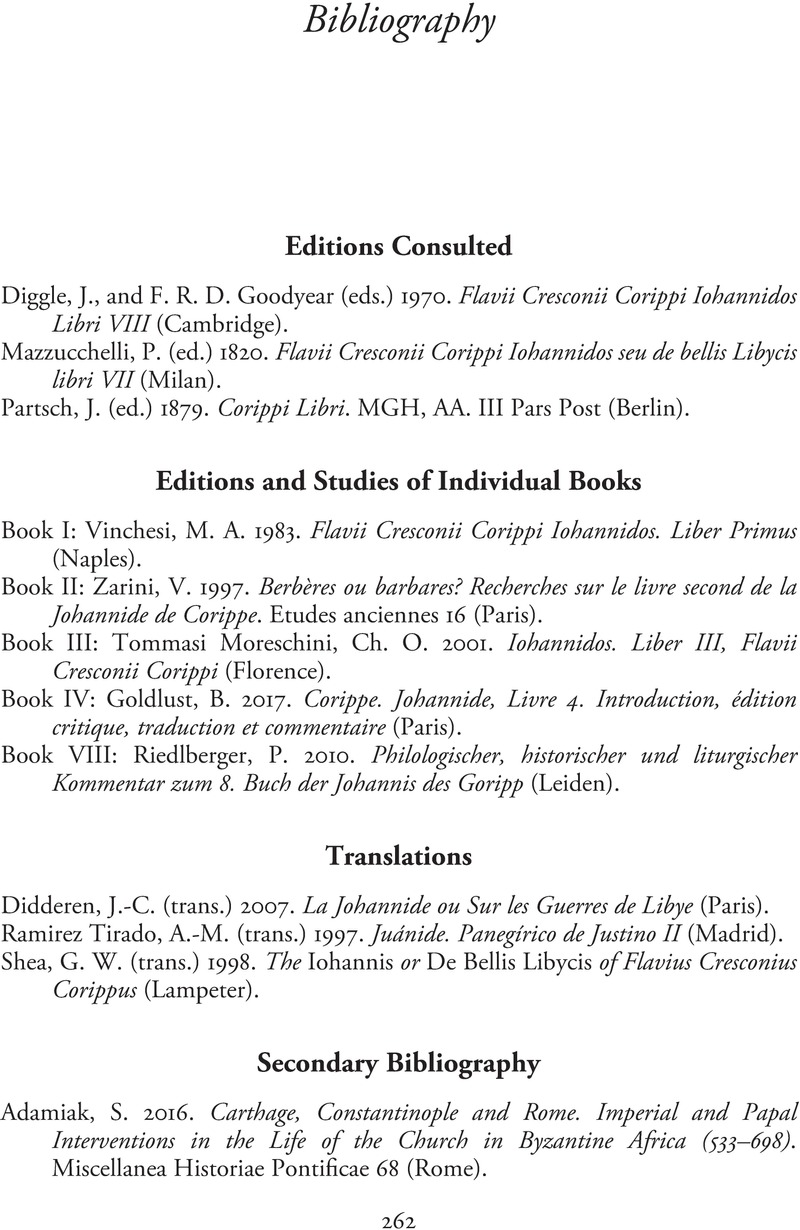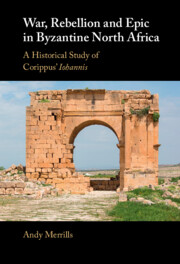Book contents
- War, Rebellion and Epic in Byzantine North Africa
- War, Rebellion and Epic in Byzantine North Africa
- Copyright page
- Dedication
- Contents
- Maps
- Preface
- A Note on Abbreviations, Translations and Maps
- Chapter 1 ‘I Sing of Things That Are Not Unknown’
- Chapter 2 Prelude to a War
- Chapter 3 Past and Future in the Iohannis
- Chapter 4 Corippus and the Moorish World
- Chapter 5 ‘For Every Blade Was Red’
- Chapter 6 Christianity and Paganism in the Iohannis
- Conclusions
- Bibliography
- Index
- References
Bibliography
Published online by Cambridge University Press: 12 October 2023
- War, Rebellion and Epic in Byzantine North Africa
- War, Rebellion and Epic in Byzantine North Africa
- Copyright page
- Dedication
- Contents
- Maps
- Preface
- A Note on Abbreviations, Translations and Maps
- Chapter 1 ‘I Sing of Things That Are Not Unknown’
- Chapter 2 Prelude to a War
- Chapter 3 Past and Future in the Iohannis
- Chapter 4 Corippus and the Moorish World
- Chapter 5 ‘For Every Blade Was Red’
- Chapter 6 Christianity and Paganism in the Iohannis
- Conclusions
- Bibliography
- Index
- References
Summary

- Type
- Chapter
- Information
- War, Rebellion and Epic in Byzantine North AfricaA Historical Study of Corippus' <i>Iohannis</i>, pp. 262 - 286Publisher: Cambridge University PressPrint publication year: 2023



